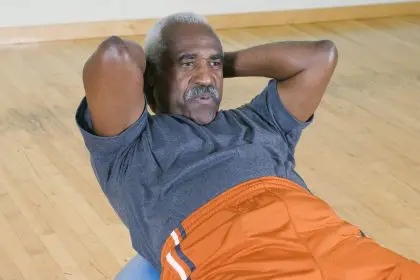
Between the cold weather and the demands of the holidays, it’s easy to find excuses to skip workouts. While it’s OK to cancel your gym sessions every once in a while, you will regret it once you feel and see the negative effects of stopping completely.
So, just how long does it take to get back in shape once you’ve fallen off the wagon? The answer depends on various factors including:
– How many years of exercise you have.
– How long you’ve taken time off.
– Muscle mass prior to stopping training.
– Genetic responsiveness to training.
– Whether you cut back or stopped exercising completely.
– Frequency and Intensity of fitness training.
Keep in mind, your muscle mass decreases significantly as you age, so it’s important to remember that it’s never too late to start, and the sooner you start, the sooner you’ll reap the benefits. Unfortunately, it takes much longer to get into shape than it does to lose your physical fitness. And once you approach your mid-30s, it only gets harder.
Cardio losses are more notable than declines in strength. However, although cardiovascular endurance is lost quicker than strength is, even short sessions of daily cardio can help retain some level of fitness.
As far as strength training goes, it’s equally important to make it a regular part of your routine. If you don’t exercise, you will lose approximately three pounds of muscle mass every six years. On the other hand, a basic strength-training program can add three pounds of muscle in as little as three months. Keep in mind, muscle takes up less mass than fat, so you may be shrinking even if the scale isn’t moving down as quickly as you’d like.
According to ACE, it takes about four months to get completely out of shape. In an even more harsh statistic reported in Shape magazine, “When you stop exercising completely . . . you can lose up to 50 percent of your hard-earned fitness gains in a single week of inactivity.”
Before you start freaking out over a few weeks of inactivity, reducing your exercise output once or twice a year (for no more than two or three weeks) has its benefits and allows your muscular and nervous systems time to fully repair and recuperate.
Tip: Intensity matters. When you’re running short on time or motivation, opt for two to three brief, but hardcore exercise sessions instead of your normal workout. It’s a lot easier to maintain fitness than it is to get it back once you’ve lost it.
Wishing you health and happiness,
HLJ
Holly Lowe Jones is a media professional, certified fitness expert, certified nutritional therapist, and personal trainer (ISSA). A member of the National Association for Health and Fitness, Jones is also a seasoned triathlete who competes in her spare time.
For more information, please visit her website www.hollylowejones.com.
Facebook: www.facebook.com/hollylowejones
Instagram and Twitter: HollyLoweJones















